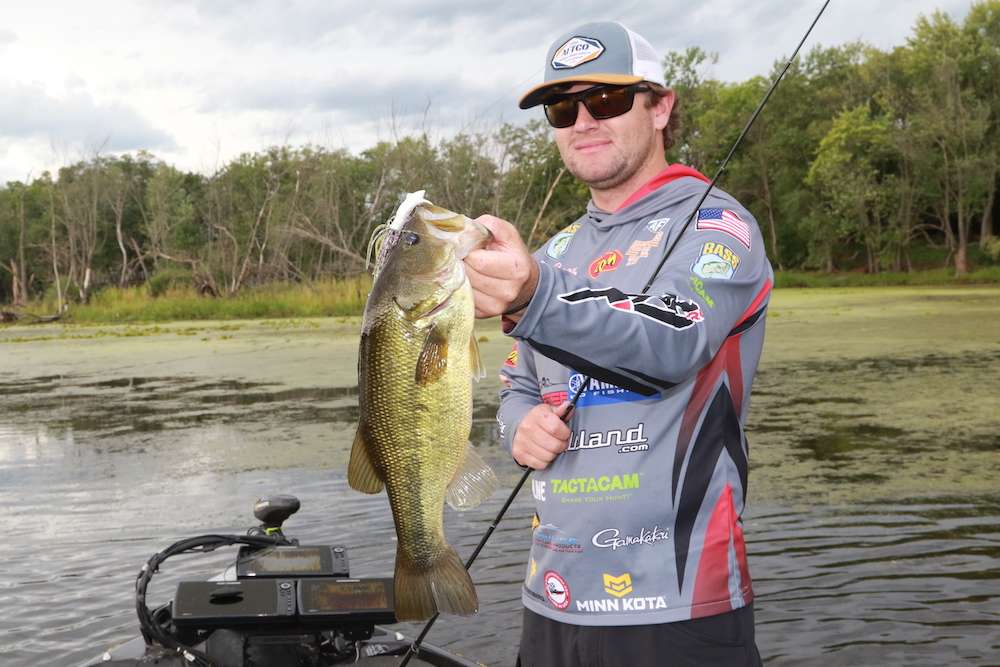
You can’t blame Wes Logan, walking a topwater along the out edge of a backwater pocket stuffed with pads and a grassy perimeter was a reasonable start. However, when he noticed silver shards flipping and splashing throughout the tattered vegetation edges, he immediately backed out, switched to a swim jig and started catching the bass preying on this forage.
This scenario, Logan said epitomizes a key element of the fall season — baitfish congregating in the backs of creeks, canals and shallow backwaters. It might seem like easy pickings — lots of food attracting lots of bass — but it’s kinda like feeling hotdogs at a barbecue buffet.
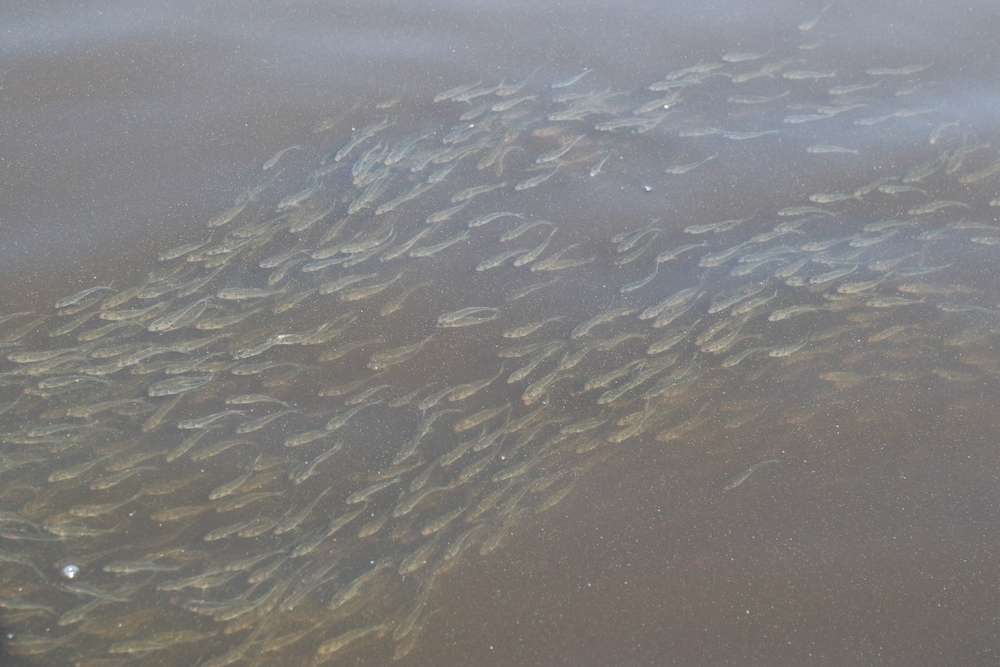
“Fall can be good and bad; you’ll see a lot of activity with them schooling, but it can be frustrating trying to get them to bite,” said Elite angler Logan. “One thing you can do with swim jigs is change the trailer; downsize or try a different action.
“From a color standpoint, you can go (counter to the norms). Obviously, they’re feeding on shad, so you might throw a black one or a green pumpkin. Or, you can throw a translucent color where they can’t really get a good look at it.”
Before delving into presentation strategies, let’s consider Logan’s thoughts on the fall baitfish parade.
Stars of the show
Through the year’s end, southern fisheries will find largemouth bass munching plenty of bream, crawfish and inattentive frogs. However, the smart money leverages the seasonal baitfish march.
“Basically, you have to follow the shad; it’s clicheed to say, but that’s what the fish are following,” Logan said. “Sometimes in the fall, you might find a certain area where the shad’s so thick you can walk on ‘em. I don’t like as much as places with fewer shad.
“I feel like you have a better opportunity for the fish commit to your bait than the areas with (numerous) shad swimming around.”
Worth noting, Logan said fall can present deceptive looks, so it’s important to give each area you consider more than a cursory evaluation.
“You may get into an area that doesn’t look like there’s a lot of bait, but there’s just enough to have a group of fish in there. You might have a better chance of actually catching those, whereas your other areas might have a lot of fish but you can’t them to commit to anything.”
Ambush zone
While fall offers numerous scenarios for picking off shad-focused bass, grass edges are one of the most strategic. Biggest reason: Fragmentation. The year’s third quarter finds many of the dense grass beds that flourished through summer thinning with the seasonal cooling.
Solid grass edges become increasingly uneven, as the random withering leaves isolated clumps. These sporadic clusters of hydrilla or milfoil hold a diminishing supply of the algae baitfish nibble, while hopping from one little island to the next in a game of musical chairs.
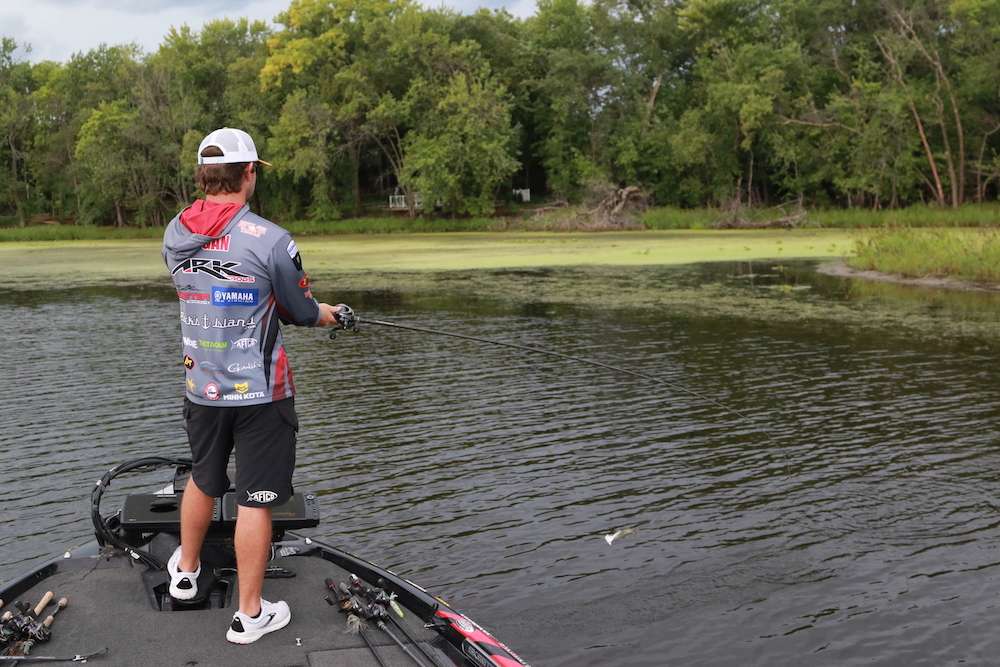
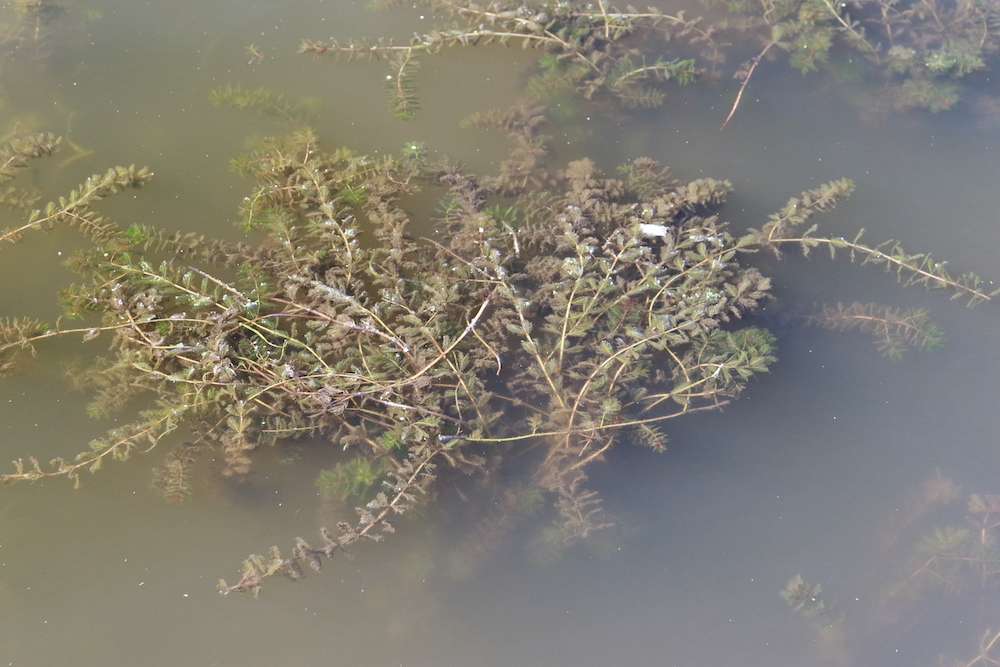
“That shallow grass is the ideal scenario because it gives those fish an opportunity to set up those clumps and hard edges,” Logan said. “The bait will be in little basketball size schools, just swimming through that stuff.
“As they move down those edges and through those clumps, it’s just an easy meal for fish. They don’t have to work very hard; they can just back into those little clumps of grass and they can sit there and eat all day.”
Logan said he favors a spot with enough emergent grass remaining to hold good numbers of bass, but lots of tattering along the edges where they can ambush passing shad.
“Obviously, that narrows down the places he’s going to be, so it makes them more predictable,” Logan said. “He should be right there, he should be on that corner, he should be on that clump.
“You may catch a random one here and there, but that’s where the majority of them are going to set up.”
Effective presentation
Fall welcomes several grass edge baits of reaction and flipping nature, but in grassy southern waters, Logan believes his swim jig will outproduce anything else.
“In that really shallow grass in the fall, I feel like that’s when that swim jig really excels the most,” he said. “You’re not going to be able to throw a topwater when you have a lot of matted or floating grass.
“Also, in eel grass like on Guntersville, you can’t throw a topwater, buzzbait or a bladed jig because it’s too dense. A swim jig is most efficient in this kind of cover.”
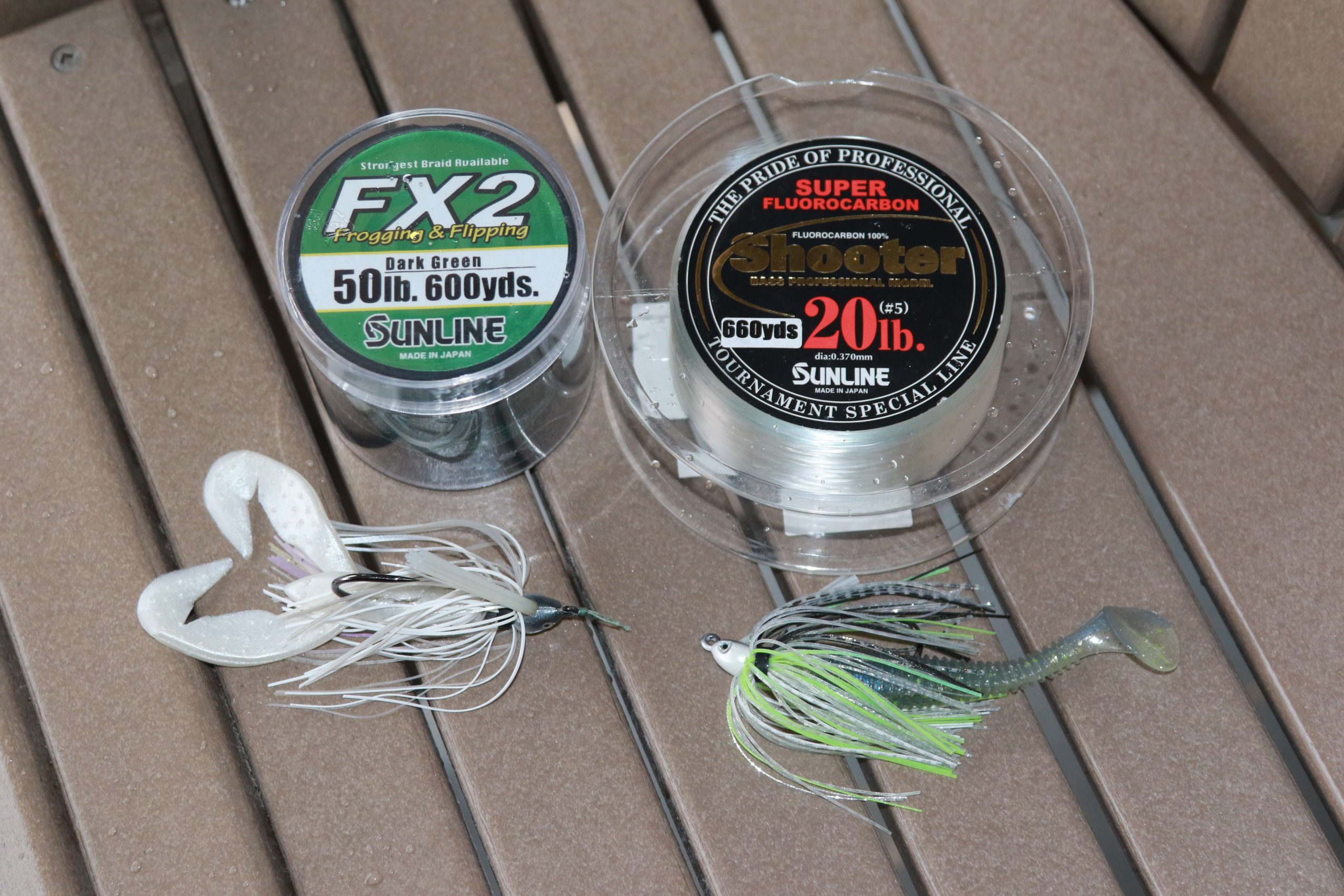
Logan typically throws a 5/16-ounce Dirty Jigs No Jack swim jig. He’ll alternate between a Zoom Super Speed Craw and a Zoom Z Swim to show the fish different looks.
Dirty Jigs makes a lighter model with a thinner diameter hook that works well in more open-water scenarios, but Logan prefers the beefier rig for fall grass edges.
“I can do so much with that 5/16 depending on size of trailer,” he said. “The bigger the trailer, I can make it float up; if I want it to sink a little bit, I can slow the retrieve and put a smaller trailer on the jig.
“If I go to 3/8- or a 1/2-ounce, I’ll have to work the bait harder to get it to do what I want. The 5/16 just keeps me from getting (fatigued).”
Notwithstanding his reliance on the No Jack model, Logan said he’ll keep the lighter setup handy. This, he said, typically is more of a reaction to non-committal fish.
“If I’m having some fish miss the (larger swim jig) or take a pincher off my bait, I’ll drop down on my size, so if they do come up after it, they’ll get the whole bait in their mouth,” he said.
Logan throws his full-size swim jig on a 7-6 medium-heavy Ark Reinforcer rod with a Lew’s Pro Ti reel and 50-pound Sunline FX2 braid. If he goes to the lighter swim jig, he’ll use a 7-3 medium-heavy Ark Reinforcer rod with a Lew’s Pro Ti reel reel and 20-pound Sunline Shooter Fluorocarbon.
Bottom line, you gotta gear up when playing close to the grass, but sparser areas accommodate lighter tackle.
“You don’t have to be overpowering that regular swim jig because you don’t want to flex that hook out,” Logan said. “But with that No Jack swim jig, you want that heavier outfit so you can get ‘em out of that grass.”
Originally posted in 2021.





